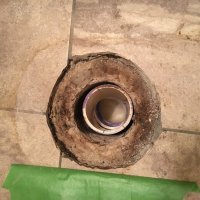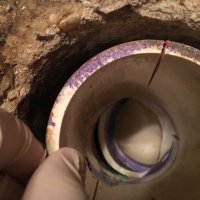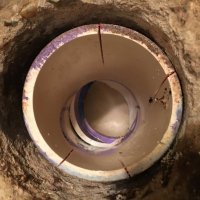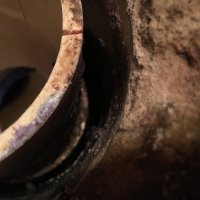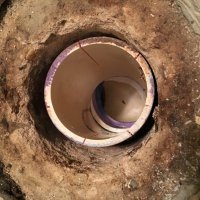newbplumber
New Member
Basically, someone glued in the toilet seal to the house plumbing. The foundation shifted (presumably) and the house plumbing (PVC) split into 2 pieces. The split is about 6" deep into the slab foundation. Part of the split includes the very top section of a 90 deg elbow and extends through that glued connection to the 6" straight piece that goes into the house. The crack is a pretty clean break, the primary challenges being it is angled and includes the joint for the 6" vertical piece and horizontal elbow.
Where I'm at now:
I've cut off the toilet flange (couldn't really see what was going on until I did this).
Deciding whether I should cut out the 6" straight piece which is broken, or if a reasonably solid repair job could be had on this broken joint.
What is the best approach forward from here?
Other considerations:
-Slab foundation
-House built in 1962 but new PVC sewage lines were installed by a previous owner (5-10 years ago).
-It will be rather difficult to remove the broken 6" piece because the collar from the elbow will not fit through the hole in the foundation.
-What set me on this quest in the first place is a rather noticeable sewage smell permeating the house. Plumber wanted to charge $1,200+ to hydro jet the lines & replace flanges on both toilets. Figured I could replace the flanges and see if that fixed it rather than shell out the cash.
Thanks in advance!
Where I'm at now:
I've cut off the toilet flange (couldn't really see what was going on until I did this).
Deciding whether I should cut out the 6" straight piece which is broken, or if a reasonably solid repair job could be had on this broken joint.
What is the best approach forward from here?
Other considerations:
-Slab foundation
-House built in 1962 but new PVC sewage lines were installed by a previous owner (5-10 years ago).
-It will be rather difficult to remove the broken 6" piece because the collar from the elbow will not fit through the hole in the foundation.
-What set me on this quest in the first place is a rather noticeable sewage smell permeating the house. Plumber wanted to charge $1,200+ to hydro jet the lines & replace flanges on both toilets. Figured I could replace the flanges and see if that fixed it rather than shell out the cash.
Thanks in advance!

